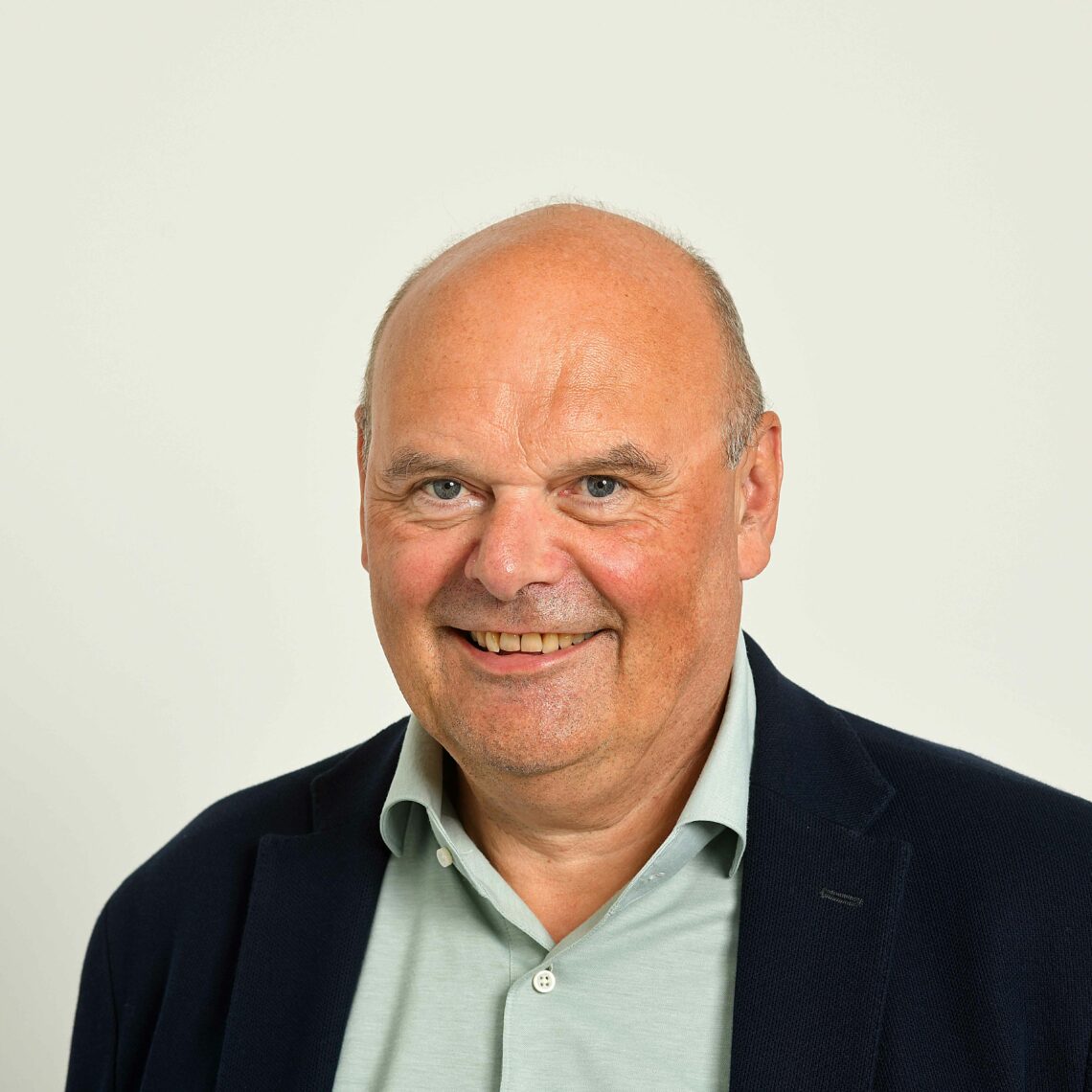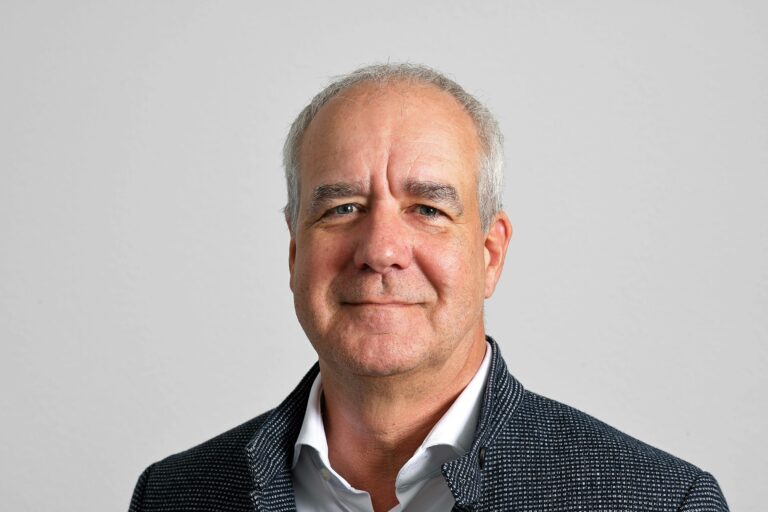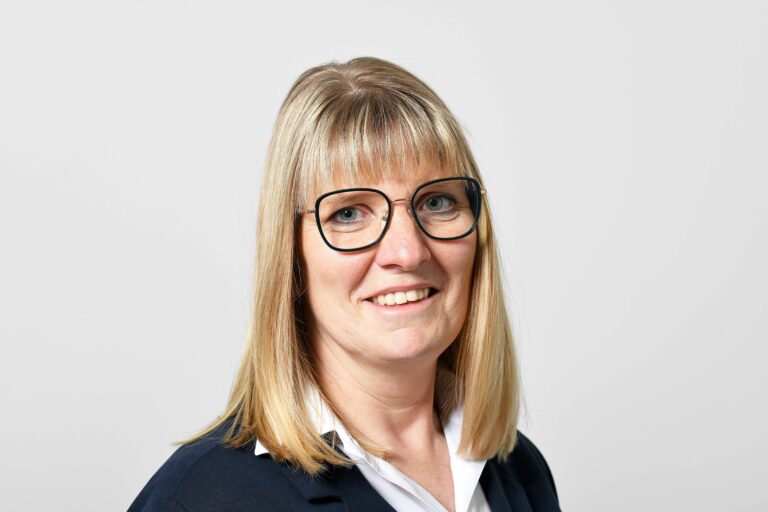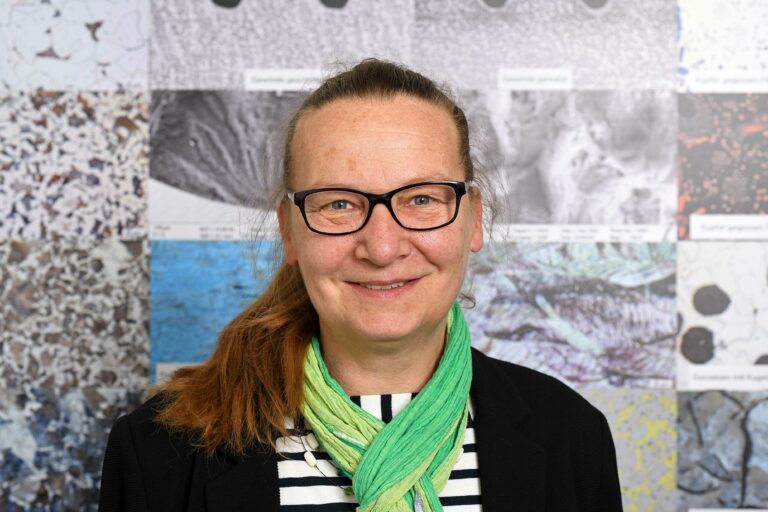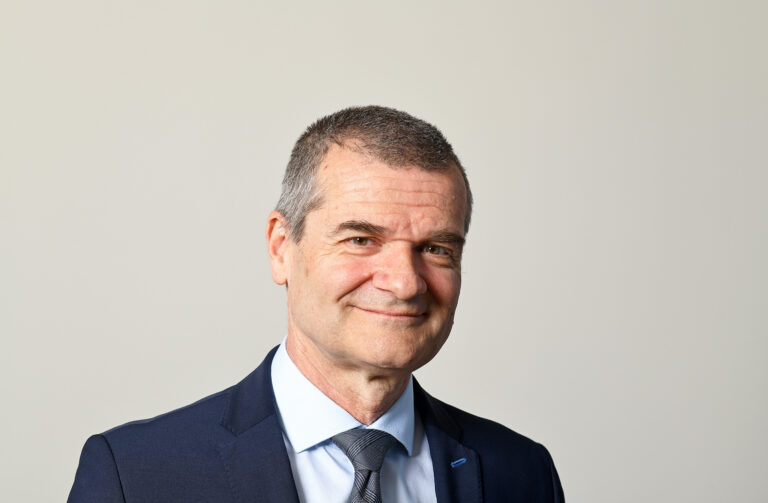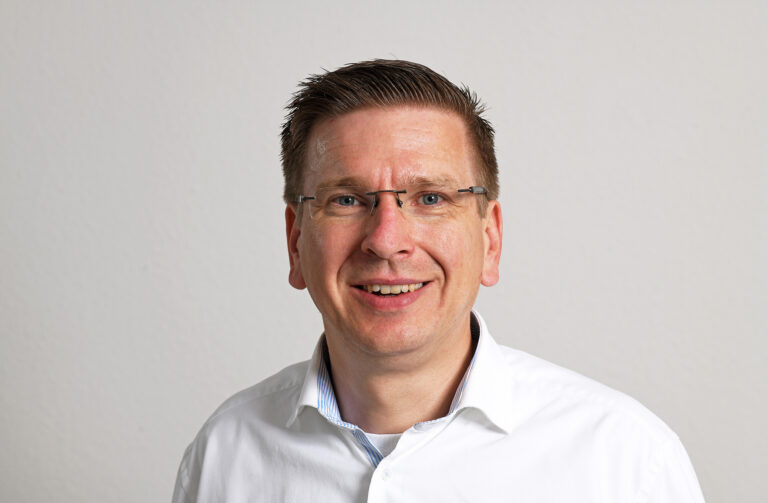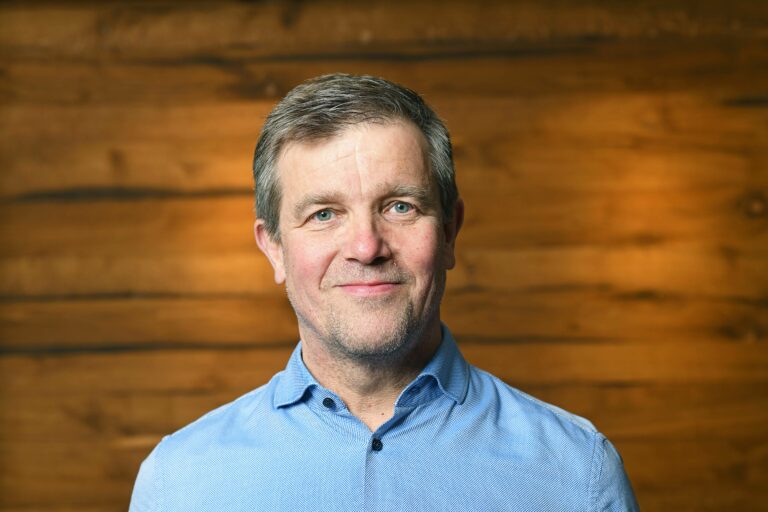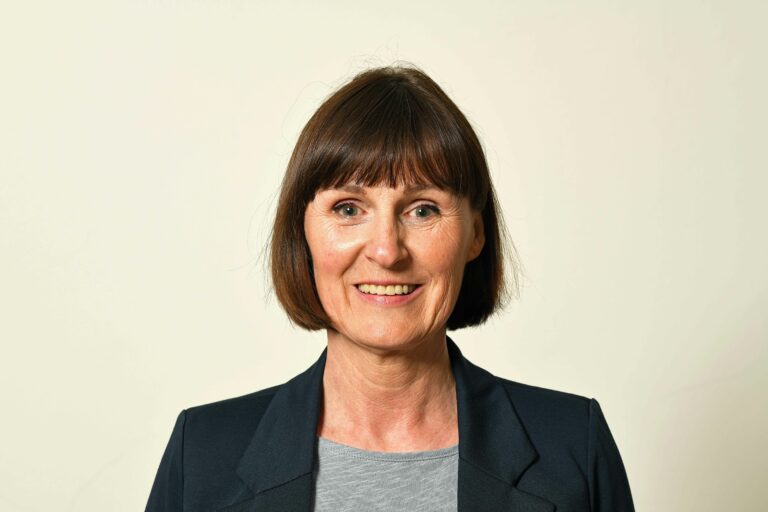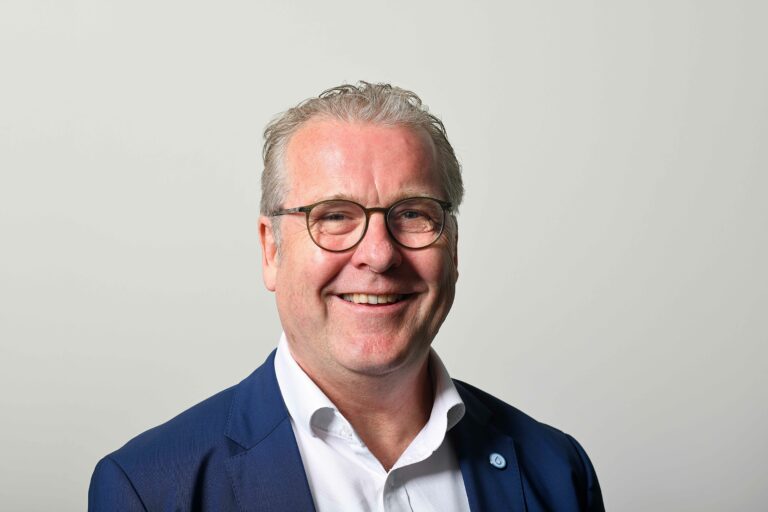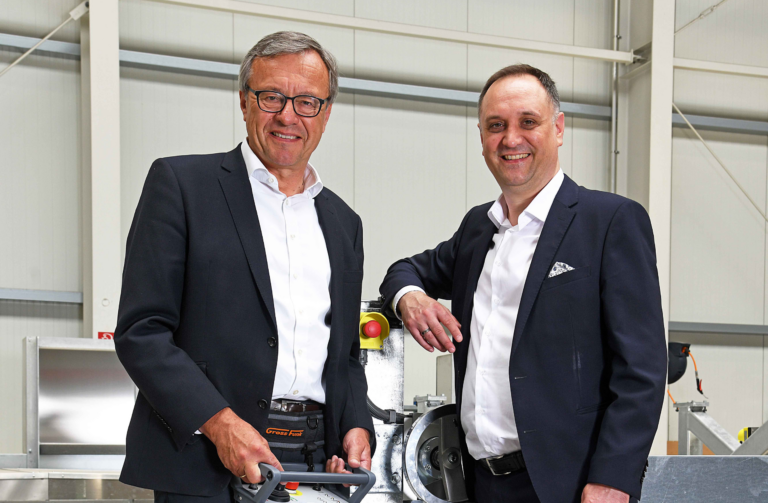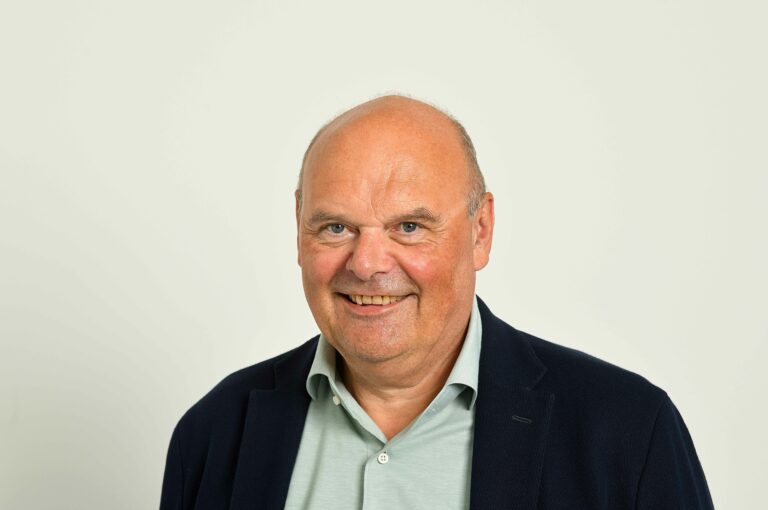When you approach Wismar port, you immediately understand the significant role that the renewable raw material wood plays here. Michael Kremp knows the feeling as well. He has been CEO of Seehafen Wismar GmbH since 2006.
With roots in inland navigation, his career began in Duisburg in 1980. He subsequently took on various leading roles in different parts of the economy.
From his current office, in a module building made of wood located directly on the waterfront, he sees huge mountains of wood chippings, the typical smell mingling with the fresh sea air. If he lets his gaze drift along the quay wall, the 62-year old soon sees impressive cranes unloading raw timber from large ships. The wood lands directly in huge production buildings located in the immediate vicinity. The wood processing companies in Wismar port are a godsend for the Hanseatic town. More than 2,000 people work here, turning this site that is already unique into a strong backbone for the port, and turning it into a real gain for the town, which benefits from the considerable tax revenues.
“Wismar’s wood cluster is second to none. I know of no other comparable processing and machining infrastructure in Europe. We’re talking about an industrial estate covering 110 hectares”, says Michael Kremp. When the qualified freight forwarding agent came to Wismar almost two decades ago,
the wood cluster already existed. The big players in particular had become well established on the formerly military land called Haffeld. These included a sawmill and planing facility which has been operating under the name of Ilim Nordic Timber since 2010 and is one of the biggest names in the industry worldwide. 80 million boards are produced here alone every year.
Other companies on the site include Mayr-Melnhof Holz with their laminated wood production site, German Pellets, the Pallet Service and a trimming centre. There is an extremely close, direct connection with Egger Holzstoffwerke, a company mainly involved in the production of laminate flooring and fibreboards. A conveyor belt brings the necessary raw materials such as wood chips and sawdust from the sawmill into Egger’s production facility.
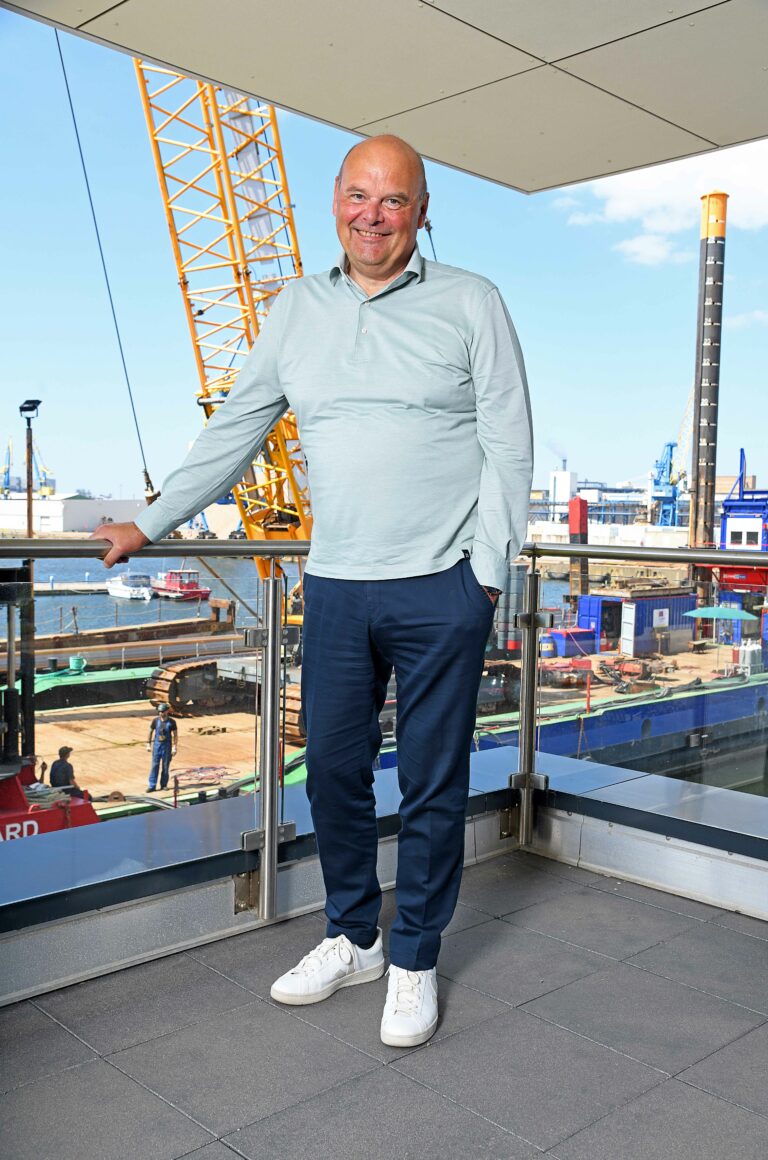
Port and cluster inseparably joined
The total turnover of seven million tonnes on average makes it clear that the universal port of Wismar relies on wood: “About 50 percent of the tonnage relates to this raw material and is transported by various means of transport such as rail, truck and ship. The wood cluster and Wismar port: it’s like a marriage. You can’t have one without the other”, says Michael Kremp. It seems to be almost a matter of course, for example, that 35,000 cubic metres of sawn timber are handled here for the USA. That corresponds to 11,000 packs transported by sea on ships measuring 320 metres in length and 35 metres in width.
Wood has a history all of its own here in Wismar part. The origins of ‘Wissemer’ port go back to the year 1211, which is actually before the town itself was founded in 1229. But it was only much later that the eldest natural construction material became an important commodity, following turbulent years of port history. It was in the 19th century that wood became established as an important raw material alongside the handling of coal. The port had to be expanded. This was followed in the more recent past by additional extension work. The last expansion took place in 2018, building 43,000 cubic metres into the water. “This was the largest port facility upgrade in recent times”, reports the port boss.
Covering the entire value chain
The central location of the maritime infrastructure has proven to be ideal for serving north/south transportation routes between Scandinavia and Central Europe. “It’s an optimum link for the entire industrial location”, enthuses Michael Kremp. It bypasses the town of Wismar almost entirely. This also means that the infrastructure still offers capacity, an important point for the future. “We have established a very broad basis which meant we were able to cope well with the recent crises”, says Wismar port CEO. “Another outstanding factor in our success is that we as the port company are responsible for both the operative business and for the infrastructure. This allows us to cover the entire value chain and fulfil the needs of our customers.”
Site traffic passes through an automated truck gate. 24 hours a day, seven days a week. Whether passing through, entering the port or collecting goods – some aspects have been optimised on a joint basis. As a result, Wismar port and with it the wood cluster are in a good competitive position, something Michael Kremp is certain about. He himself sees wood as being a very significant raw material, even though the building industry in particular is struggling with current developments. Slow approval procedures, increasing costs, decreasing interest in building: everyone feels the difficult situation, from construction timber manufacturers to laminate producers. “The value chain could be broader if more houses were made entirely of wood, for example”. As well as building houses including floors and furniture, wood is used in the domestic paper industry and also as a source of energy.
Building a digital twin
Those involved in the port and the wood cluster keep in touch regularly. The former “wood round table” no longer exists, but they share mutual insights when they meet. “We are constantly trying to improve logistic workflows. New handling equipment and optimised technical resources are a couple of aspects that challenge and encourage us.” However, there are limits to this, estimates Michael Kremp, because there won’t be too many technical innovations to come.
Wismar port has long since made adjustments to future demands: “We replace the rolling equipment every four years. That gives us the very latest technical trends here on site.” Nor does Michael Kremp anticipate any notable innovations for the heavy-duty equipment. After all, a mobile excavator is a mobile excavator: it can have various types of drive and possibly a bit of optimisation potential, but that’s all.
The manager is therefore vehemently pursuing his strategy for further digitalisation. “We’re digitalising everything we can.” Among others, that includes building a digital twin, a 3D model of the port with real-time visualisation of all the logistics workflows. Productivity aspects are also revealed, such as how long the goods remain on the quay.
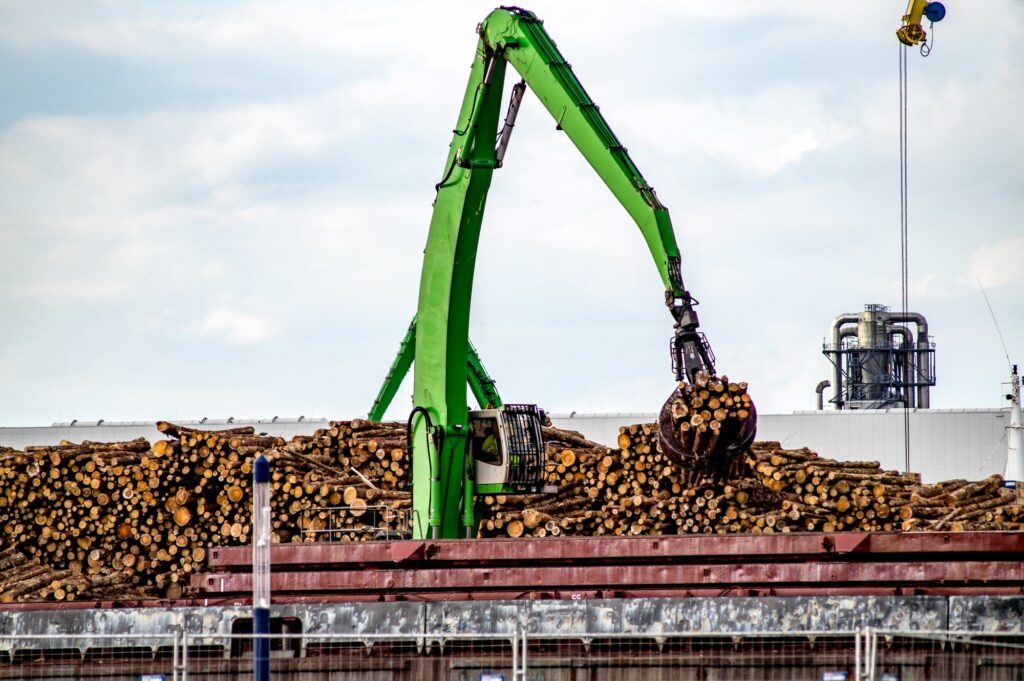
Becoming a green port
The green port is another important topic for Michael Kremp. “If we get permission for a wind turbine, we’ll soon be self-sufficient to 85%. In combination, we could generate three million kilowatt hours for the port. That’s not much, but when all is said and done, it makes an active contribution towards an environmentally-friendly approach to energy and protects resources at the same time. In the long run, we want to be a green port”, says the CEO. He is realistic enough to know that even with these developments, it won’t all change overnight. You need the right connections to supply ships with shore-side power when in port, and also deck cranes when loading and unloading, with their higher energy demand. And the right connections are missing at the moment. “Nothing is standardised, everyone comes with a different idea. You can compare it with phone batteries and the USB-C ports that are now used. It took a long time to get it all implemented. It’s similar with ships, just that the connectors are a bit bigger.”
Michael Kremp’s comprehensive expertise will help to master this challenge as well. Customers rely on the experience already gained in the old wood port, and on modern know-how for handling wood. “Tradition and the future thus combine to keep us in a leading position in the wood industry”, says Michael Kemp. As long as the wood cluster exists and goods have to be moved physically, he’s not worried about the future of Wismar port.
Seehafen Wismar GmbH
Sie sehen gerade einen Platzhalterinhalt von Standard. Um auf den eigentlichen Inhalt zuzugreifen, klicken Sie auf den Button unten. Bitte beachten Sie, dass dabei Daten an Drittanbieter weitergegeben werden.
Mehr Informationen
